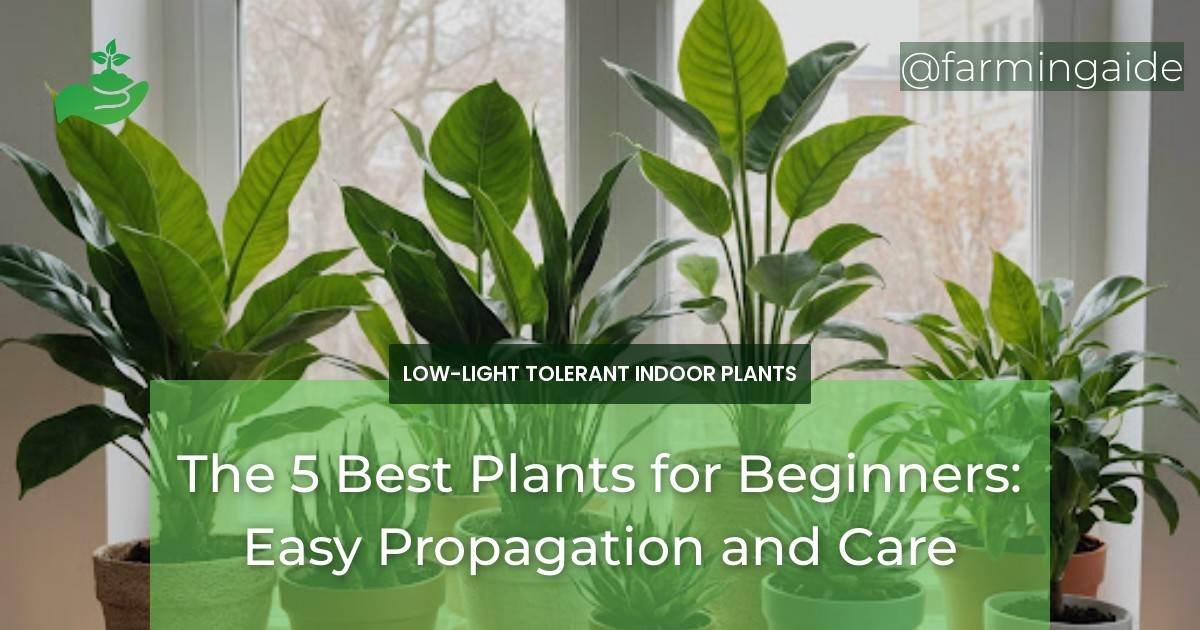Are you new to the world of indoor gardening and looking for a green thumb-friendly way to start? You’re in the right place! In this article, we’ll explore the 5 best plants for beginners, easy propagation techniques, and basic care tips to get you started on your indoor gardening journey.
Key Takeaways
- Discover the top 5 beginner-friendly plants that are easy to care for and propagate.
- Learn simple propagation techniques to multiply your plants.
- Get basic care tips to keep your plants thriving.
- Understand common mistakes to avoid as a beginner.
- Embark on a journey to develop your green thumb.
Introduction to Indoor Gardening
Indoor gardening is a wonderful way to bring some greenery into your home, purify the air, and even improve your mental health. However, getting started can be daunting, especially for beginners. Choosing the right plants, understanding their needs, and avoiding common mistakes can be overwhelming. Fear not! We’re here to guide you through the process and set you on the path to becoming a successful indoor gardener.
Benefits of Starting an Indoor Garden
Indoor gardening offers numerous benefits, including air purification, aesthetic appeal, and even stress relief. Plants can help remove toxins from the air, create a sense of calm, and add a touch of nature to your home.
Common Challenges for Beginners
As a beginner, you might face challenges like overwatering, inadequate light, and neglecting to repot. Don’t worry; we’ll address these common mistakes and provide you with valuable tips to overcome them.
Top 5 Beginner-Friendly Plants
These five plants are perfect for beginners, requiring minimal care and offering great rewards.
ALSO READ
Snake Plant (Sansevieria)
The snake plant is a low-maintenance plant that thrives in low-light conditions, making it perfect for indoor spaces. It’s also great at purifying the air, making it a popular choice for beginners.
Propagation is easy with snake plants, as you can simply divide the roots or use leaf cuttings.
Pothos (Epipremnum aureum)
Pothos is a versatile, low-maintenance plant that can grow in a variety of lighting conditions. It’s also a great air purifier, making it a popular choice for indoor gardens.
Pothos is easy to propagate using stem cuttings or leaf nodes.
ALSO READ
ZZ Plant (Zamioculcas zamiifolia)
The ZZ plant is a low-maintenance plant that can survive in low-light conditions and infrequent watering. It’s perfect for busy beginners who want a low-fuss plant.
Propagation is easy with ZZ plants, as you can simply divide the roots or use leaf cuttings.
Spider Plant (Chlorophytum comosum)
Spider plants are easy to care for and produce beautiful white flowers. They prefer bright, indirect light and well-draining soil.
Propagation is easy with spider plants, as you can simply divide the roots or use stem cuttings.
Peace Lily (Spathiphyllum)
Peace lilies are known for their elegant white blooms and ability to purify the air. They prefer well-draining soil and moderate watering.
Propagation is easy with peace lilies, as you can simply divide the roots or use stem cuttings.
Easy Propagation Techniques
Propagation is a great way to multiply your plants and share them with friends. Here are three easy techniques to get you started:
Rooting in Water
Rooting in water is a simple technique that involves submerging the cut end of a stem in water. Roots will begin to form within a few weeks, and you can then transfer the plant to soil.
Division
Division involves separating the roots of a mature plant to create new plants. This technique is perfect for plants like snake plants and spider plants.
Stem Cuttings
Stem cuttings involve cutting a section of a stem and rooting it in soil or water. This technique is perfect for plants like pothos and peace lilies.
Basic Care Tips for Beginners
Here are some basic care tips to get you started:
Watering Essentials
Watering is crucial for plant growth. Make sure to water your plants when the soil feels dry to the touch, but avoid overwatering.
Light Requirements
Lighting requirements vary depending on the plant. Make sure to research the specific lighting needs of your plants to ensure they thrive.
Fertilizing Basics
Fertilizing is essential for plant growth. Use a balanced fertilizer during the growing season to promote healthy growth.
Common Mistakes and How to Avoid Them
Here are some common mistakes beginners make and how to avoid them:
Overwatering
Overwatering is a common mistake that can lead to root rot. Avoid watering too frequently, and make sure the soil has a chance to dry out between waterings.
Inadequate Light
Inadequate light can lead to weak, leggy plants. Make sure to research the specific lighting needs of your plants and provide the necessary light.
Neglecting to Repot
Neglecting to repot can lead to root bound plants. Repot your plants every 1-2 years to provide fresh soil and a larger pot.
Conclusion: Embracing Your Green Thumb
Congratulations on taking the first step towards becoming an indoor gardener! With these beginner-friendly plants, easy propagation techniques, and basic care tips, you’re well on your way to developing your green thumb.
Encouragement for Continued Learning
Remember, indoor gardening is a journey, and it’s okay to make mistakes. Keep learning, experimenting, and having fun with your plants.
Resources for Further Gardening Knowledge
Here are some resources to help you continue your indoor gardening journey:
- The Spruce: A comprehensive resource for indoor gardening tips and tricks.
- Gardening Know How: A wealth of information on plant care, propagation, and more.
- Local nurseries and gardening clubs: Connect with local gardening communities for personalized advice and guidance.


